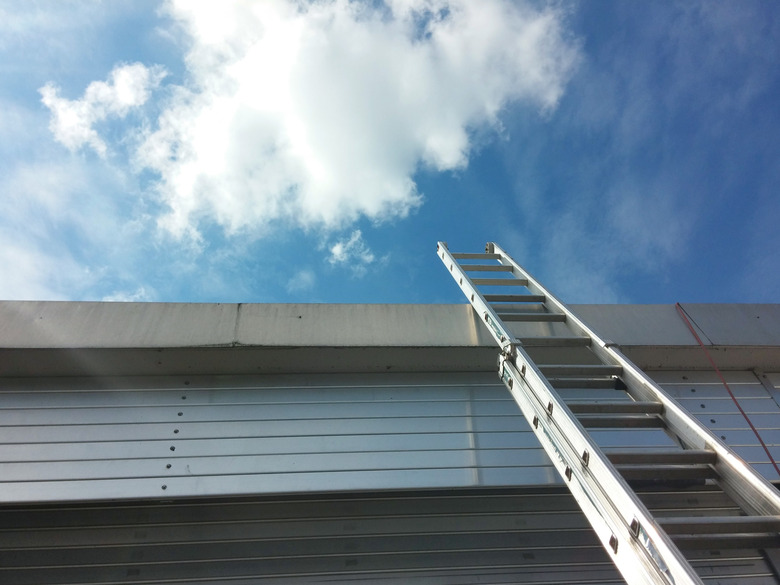How To Raise A Heavy Extension Ladder
When you're working high overhead, an extension ladder is your best friend, but getting a tall, heavy extension ladder upright can take some muscle. Before you attempt the feat, make sure you're in good enough physical condition to handle the job. Then, use a few tricks and safety techniques to muscle through the job.
Choose a Ladder Location
Choose a Ladder Location
You probably already have a target area for positioning your ladder. Maybe you're cleaning your gutters, repairing a window or climbing to the roof to do a repair. It's time to do a safety check before you try to raise your ladder. Always steer clear of power lines because the ladder can touch the lines, or you can accidentally touch or grab the lines.
You also need flat, firm ground beneath your ladder. It's tempting to use wood or another material to level out the ground, but that increases the risk of tipping or sliding. You can dig out some dirt from the high area if you need to use the ladder in a slightly uneven area. Never set up your ladder on a wet, muddy or otherwise slippery surface.
After carrying your ladder to the ideal location, place your extension ladder on the ground extending away from the building. The feet should be braced against the house where you want to erect the ladder. By pushing the legs against the house, you keep the unit from shifting during the ladder raise. That tension also makes it easier to heft that heavy weight up against the house.
Raise the Ladder Slowly
Raise the Ladder Slowly
Start at the end of the ladder that is away from the house. You want to grab the end and lift it off the ground. Continue lifting the ladder over your head by working hand over hand and grabbing rungs lower on the ladder as you go. Press the ladder toward the house to create pressure, which helps you raise the ladder without it sliding.
The higher you raise the ladder, the more you feel the force of its weight. Continue working calmly and smoothly, increasing the pressure of the ladder against the house if necessary to help you continue. If you don't feel like you can safely lift the ladder by yourself, slowly lower it back to the ground and find someone to help you.
Continue Extending the Ladder
Continue Extending the Ladder
Some models have an extension ladder pulley system that uses a rope to extend the unit to its full height. If you have this type of extension ladder, wait to fully extend it until you get the ladder upright. It's much easier to manage a shorter ladder when you're trying to raise it. If you need the ladder higher, simply pull on the rope to raise the telescoping section to the desired height.
You may need to move the bottom of the ladder away from the house slightly so it balances well before extending the ladder. The top of the ladder should extend at least 3 feet higher than where you want to stand or 3 feet higher than the top of the roof if you plan to climb onto the roof.
Finalize the Position
Finalize the Position
Once the ladder is upright and resting against the house, you can carefully lift the bottom of the ladder and move it away from the house. You want the ladder to sit at roughly a 75-degree angle for stability.
A simple way to figure out the right positioning is to place the feet roughly one-quarter of the total length of the ladder from the house. If you have a 30-foot ladder, divide 30 by 4 to find out the distance between the feet and the house. Since the answer is 7.5, you would want your ladder base about 7.5 feet from the house.
The weight of tall ladders can make them challenging to raise, but simple safety precautions and smart techniques make it possible to position the ladder correctly for your job.
